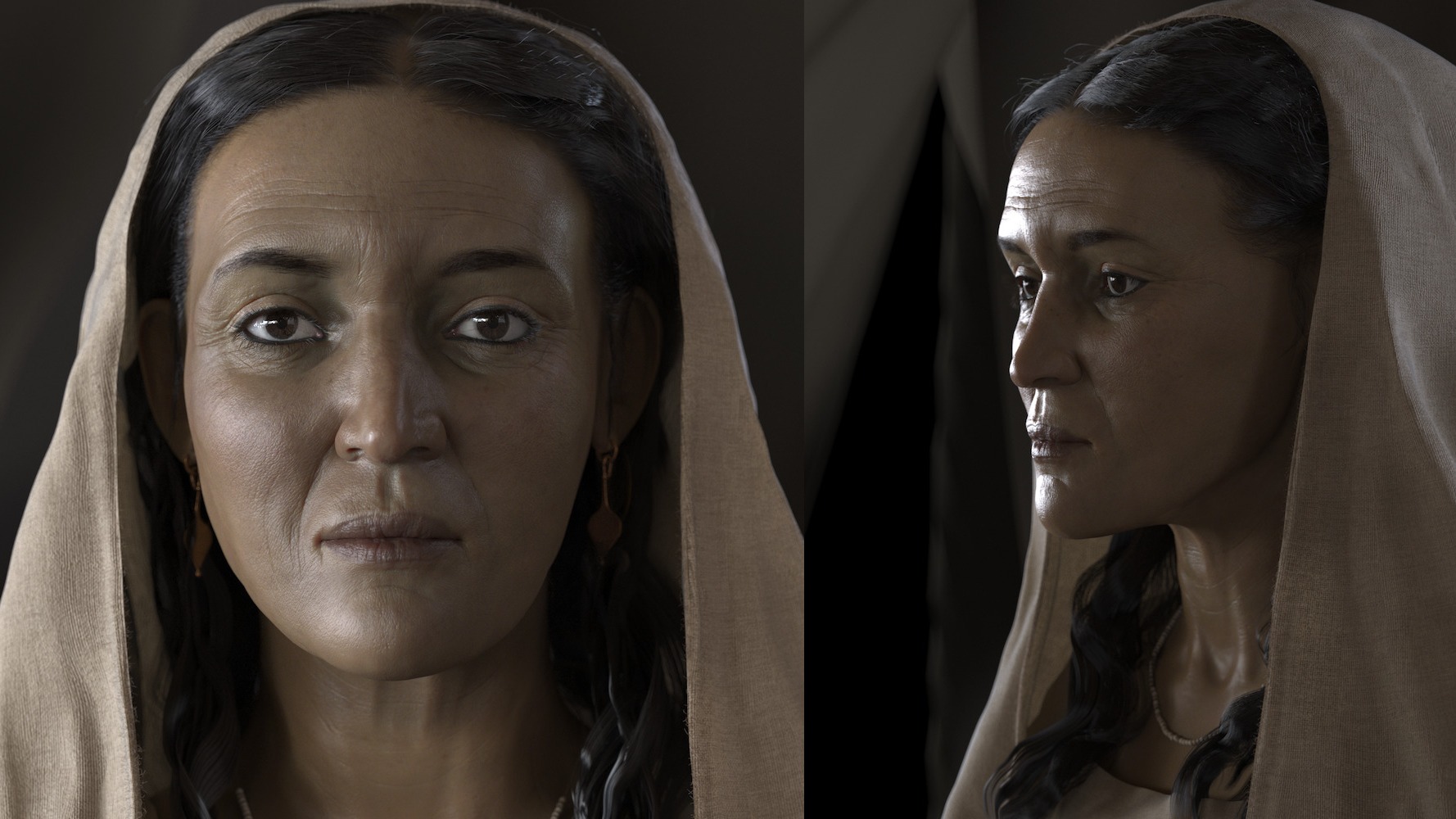Meet Hinat, a Nabataean woman who lived 2,000 years ago in what is now Saudi Arabia
For the first time ever, researchers have created a facial approximation of a woman from the Nabataean civilization.

Researchers in Saudi Arabia have unveiled the facial approximation of a Nabataean woman whose remains were buried among 80 skeletons inside a 2,000-year-old tomb in Hegra, a UNESCO World Heritage site located in the ancient city of AlUla.
Archaeologists unearthed the woman's skeleton in 2015 and named her Hinat based on an inscription about the deceased carved into the tomb's façade. Further analysis of the skeleton revealed that she lived until she was 40 to 50 years old; stood about 5 feet, 3 inches (1.6 meters) tall; and was of "medium social status" based on her burial, according to National Geographic.
For the facial reconstruction, an international team of experts tapped into their combined knowledge of forensics and paleopathology (the study of disease in ancient people) and used computerized tomography (CT scans) and a 3D printer to create a silicone approximation of a woman with dark features, with her hair partially covered in a scarf.
The project marks the first time that a facial approximation has been made of a woman from the Nabataean (also spelled Nabatean) civilization, an ancient Arab people who gained prominence around the sixth century B.C. Hinat's people lived along the Incense Trade Route linking South Arabia to the Mediterranean Sea, where they practiced their elite international trading skills. However, not much has been written about Nabataeans from a historical perspective, according to a statement from the AlUla Royal Commission.
Related: Vast 4,500-year-old network of 'funerary avenues' discovered in Saudi Arabia
"The Nabataeans are a bit of a mystery: We know a lot, but at the same time we know very little because they didn't leave any literary texts or records," archaeologist Laila Nehmé, who served as the project's director, told National Geographic. "Excavating this tomb was a wonderful opportunity to learn more about their idea of the afterlife."
Because of the lack of written or genetic records, researchers took some liberties in recreating Hinat's likeness. They used archaeological data to better understand how women from that civilization may have dressed; scraps of fabric found in her burial, for instance, served as inspiration for her clothing, according to the statement.
Sign up for the Live Science daily newsletter now
Get the world’s most fascinating discoveries delivered straight to your inbox.
However, some outside experts have questioned the accuracy of the reconstruction.
"There is still some non-scientific interpretation in face reconstruction," Laurence Hapiot, an archaeologist at the King Abdullah University of Science and Technology in Saudi Arabia, tweeted, according to CNN.
Hinat's facial approximation is currently on display at the Hegra Welcome Center in AlUla.
Jennifer Nalewicki is former Live Science staff writer and Salt Lake City-based journalist whose work has been featured in The New York Times, Smithsonian Magazine, Scientific American, Popular Mechanics and more. She covers several science topics from planet Earth to paleontology and archaeology to health and culture. Prior to freelancing, Jennifer held an Editor role at Time Inc. Jennifer has a bachelor's degree in Journalism from The University of Texas at Austin.









